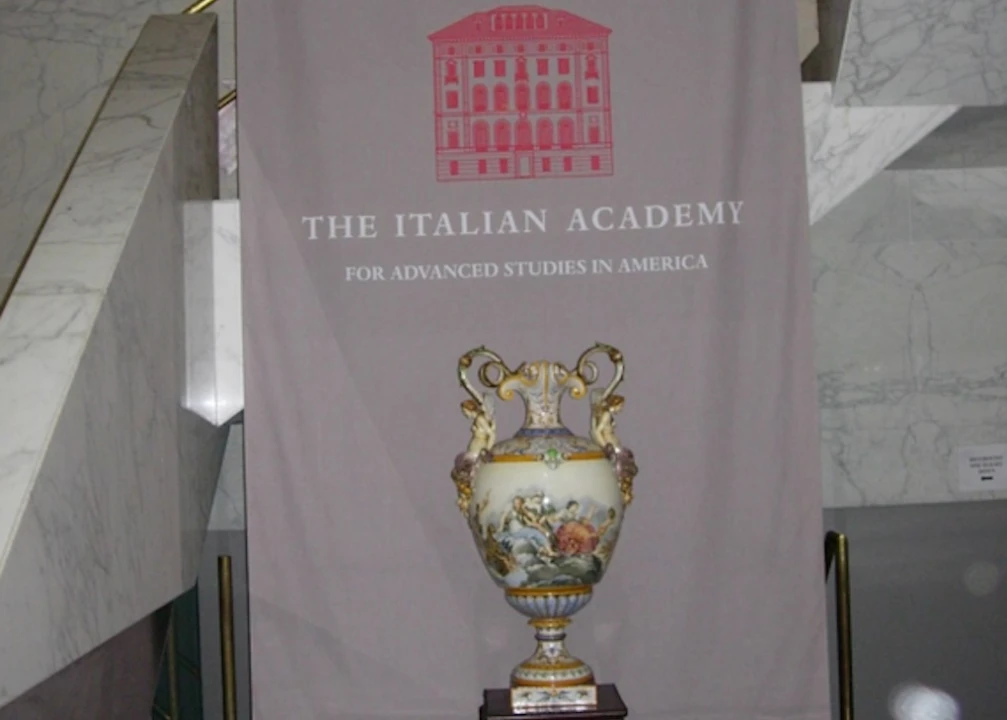The year 1927 was a milestone in Italian American assimilation. Its immigrant culture was literally electrocuted in Boston as its classical heritage was reborn on Manhattan’s west side. There was no connection between the state execution of anarchists Sacco and Vanzetti and the opening of the Italian House at Columbia University.
But, in retrospect the ironies abound. The anarchists were first generation immigrants that came to escape the poverty of Italy. The men who built the Italian House were second generation capitalists and professionals who wished to embrace the grandeur of Italy. Three generations and a world war later it is the immigrant culture that has triumphed.
There used to be a phrase for it, “dumbing down.” I’m not quite sure what the new buzz word is but dumbing down is an apt description of what has taken place in the Italian American culture over the intervening eighty years. According to the New York Times which chronicled the project from 1926 to its opening in 1927, the Italian House was to be the center of Italian Civilization in America, an inspiration and resource for all Americans of Italian descent across the nation. Columbia University donated the land on Manhattan’s Morningside Heights near the Cathedral of St. John the Divine. Three Italian-American businessmen constructed the 6-story Renaissance-style building at their own expense. An Italian American judge raised a small endowment and an Italian American doctor donated an extraordinary library of books specially bound in Rome. All told, it was a $15 million investment in today’s dollars. Even the King of Italy and then-premier Mussolini donated furniture and artwork to fill the palazzo. Inventor Guglielmo Marconi represented the Italian government at the opening ceremony in October, 1927. The Italian House opened barely a month after Sacco and Vanzetti were electrocuted. It was, no doubt, the second generation’s answer to the relentless image of Italian Americans as anarchists, gangsters and street peddlers.
It was an ambitious agenda but the community grew in the right directions between 1927 and the Second World War. Newspapers like Il Progresso and English language magazines of substance (i.e., no food or fashion) like Atlantica were published, Columbus Day became a national holiday. The second generation embarked on careers in politics, academia and business. The Bank of America, founded by A.P. Giannini in San Francisco, spanned the nation when it came to New York in 1928. Amadeo Obici’s Planters Peanut Company became an American institution. Italy was admired by most of world in the late 1920s and early 1930s. It was the pride and inspiration of the vast majority of Italian Americans. Hollywood was making gangster movies but Italian Americans had to share the stage with Irish, Jewish, German and Anglo criminals. The Italian House reflected the new era in the heart of American academia.
Today, the foundation of that second generation has all but crumbled. Italy’s defeat in the Second World War and the unrelenting stigma of the Mafia in Hollywood and in newspapers made the classical Italian heritage an oxymoron. The popular image of Italian Americans is once more that of the family (legitimate or criminal), the neighborhood, or the morally-challenged “goombah.” Add to that the stigma of an arcane Fascist connection on Morningside Heights and it may explain how the Italian House has been fully divested of its Italian American control.
La Casa Italiana now houses the Italian Academy, created in 1991 by the Italian government and Columbia. Surprisingly, both the staff of the La Casa and the Board of Guarantors of the Academy have not one native Italian American between them. Essentially, the Italians and Columbia University partitioned the Italian House between them, ousting Italian Americans from any meaningful participation. Dr. Charles Paterno’s 1927 leather-bound library of 20,000 volumes has been removed and the only acknowledgment of the sweat and sacrifice of the Italian American community is a small bronze plaque in the lobby. Italian American students at Columbia have no special attachment to La Casa nor are they groomed as a privileged group. The Italian Academy is first and foremost an Italian academic colony in New York designed not for the scions of Italy in New York or the United States but for European scholars with an itch to travel. It is also a stop for the few New Yorkers who yearn for the occasional chamber music, art exhibit, or symposium on esoteric subjects. On my first visit to La Casa there were few signs of life. In fact, I followed an Asian girl (a musician as I was later to learn) through the remote-controlled front door. In the empty lobby I viewed a photographic exhibit from Italy showing the grinning photographer rampant on a field of exposed vaginas. The third floor library was totally devoid of life, even the librarian was off somewhere. La Casa Italiana just didn’t have the look or feel of the center of Italian heritage at Columbia, never mind in America.
Clearly, Italian Americans need a shining city on the hill, or heights in this case, to put the immigrant culture back in the box as other ethnic Americans have done and to rediscover our classical birthright. There are 2,500 years of Italian and 500 years of Italian American legacies that need to be restored and disseminated to twenty million Americans of Italian lineage. Neither Columbia University (named after the first Italian American), nor Italy, our homeland, is anxious to share with us an institution that we built. Manhattan has seen some raw deals since the Dutch purchased it for only $24. But few can match the clever makeover on Morningside Heights.



